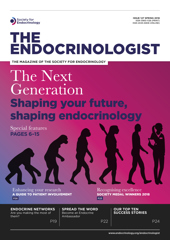The NHS provides care free of charge ‘from cradle to grave’. Funded by taxpayers, it must provide them with treatments which work (are clinically effective), but also, because it has limited resources, with treatments that reflect value for money (are cost effective). The NHS cannot spend the same money, at the same time, on (for example) both immunisations and chemotherapy.
This fact, referred to by economists as ‘opportunity cost’, was expressed clearly in 1999 by Alan Milburn, then Secretary of State for Health, who stated ‘… the NHS, just like every other healthcare system in the world – public or private – has to set priorities and make choices. The issue is not whether there are choices to be made, but how those choices are made. There is not a service in the world, defence, education or health, where this is not the case.’
THE ROLE OF NICE
NICE, the National Institute for Health and Care Excellence, has a different remit from ‘regulators’. It performs this choice-making role for the NHS.
When a pharmaceutical company wishes to sell a new drug or device in the UK, it first seeks marketing authorisation: that is, permission from regulators. Regulators for the UK include the Medicines and Healthcare Products Regulatory Agency and the European Medicines Agency. Regulators require that companies prove their drugs are eff ctive and safe.
Once licensed, many (but not all) drugs are assessed by NICE. Through its Technology Appraisal Programme and independent committees, NICE advises NHS England whether it should provide these drugs to patients.
DIFFERENT DEFINITIONS OF ‘EFFECTIVE’
When regulators want to know if a drug for diabetes is effective, it asks the company whether the drug lowers blood glucose. NICE, on the other hand, asks the company how well the drug lowers blood glucose compared with what the NHS currently offers. NICE recognises that improving haemoglobin A1c by one unit (and the cost of achieving it) would be impossible to compare with improving, say, the Expanded Disability Status Scale for multiple sclerosis by a unit.
NICE considers that an intervention which improves length-of-life and/or quality-of-life could reasonably be considered to reflect effectiveness across diseases. This underlies the quality-adjusted life year (QALY) and ‘cost– utility’ analyses. NICE then asks, ‘how much would the NHS have to spend – given how many QALYs the new drug is likely to generate – compared with what the NHS currently offers?’
COST EFFECTIVENESS IS MORE THAN PRICE
While a drug’s price often drives cost (in)effectiveness, NICE considers all costs. When evaluating a new drug for osteoporosis, NICE would necessarily consider (in addition to the cost of the drug) the cost of fractures averted, and the costs associated with adverse effects, both compared with standard care.
CHALLENGES
Evidence supporting decisions is rarely complete, which forces decision makers to use their best judgement. Some of these challenges are reflected in the following illustrations:
- Gathering evidence from the right patients: In 2006, the NICE Technology Appraisal Committee addressed inhaled insulin1 and considered that it would be best for people averse to using needles. However, the company provided no evidence for this group.
- Trials in endocrinology infrequently measure whether drugs prolong life
- ‘Cross-over’: In 2017, NICE evaluated everolimus and sunitinib, recommending them as options for treating unresectable or metastatic neuroendocrine tumours (NETs).2 NICE encountered a problem: cancer trials commonly include progression of disease as the main endpoint, and permit patients in the control group to switch to the new treatment upon disease progression. For a drug more effective than standard care, this cross-over dilutes its effect on prolonging survival. The Committee concluded ‘… despite the non-significant overall survival results and high levels of cross-over, both everolimus and sunitinib are clinically effective.’
- No ‘head-to-head’ trials: In the same appraisal, there were no trials comparing everolimus and sunitinib with each other. This required decision makers to compare them indirectly using two trials, each of which compared the active drug with best supportive care (the ‘link’). The Committee concluded that everolimus and sunitinib have similar clinical benefits for treating pancreatic NETs. Yet, indirect comparisons generate more uncertainty than evidence from trials comparing treatments directly.
- Quality of life is not ‘naturally’ a number, and few trials measure it.
WHAT IF A DRUG IS NOT COST-EFFECTIVE?
When NICE does not recommend a drug because of price, the company may offer the drug to the NHS at a (confidential) discount agreed with the Department of Health in a ‘patient access scheme’.3 This has inspired many positive recommendations.
CONCLUSION
Many treatments improve on what the NHS offers, but accessing these regardless of cost is not realistic in a publicly funded health system. NICE helps the NHS allocate resources to maximise health for the greatest number of people. NICE depends on people working within the NHS as well as patients, academics and others to carry out its work. If you are interested, you will find information here: www.nice.org.uk/get-involved.
Amanda Adler, Consultant Physician, Addenbrooke’s Hospital, Cambridge
Cambridge University Hospital Foundation Trust
REFERENCES
- NICE 2006 Technology Appraisal Guidance [TA113] www.nice.org.uk/guidance/ta113.
- NICE 2017 Technology Appraisal Guidance [TA449] www.nice.org.uk/guidance/ta449/chapter/1-Recommendations.
- NICE 2018 Patient Access Scheme Liaison Unit www.nice.org.uk/about/what-we-do/patient-access-schemes-liaison-unit.






